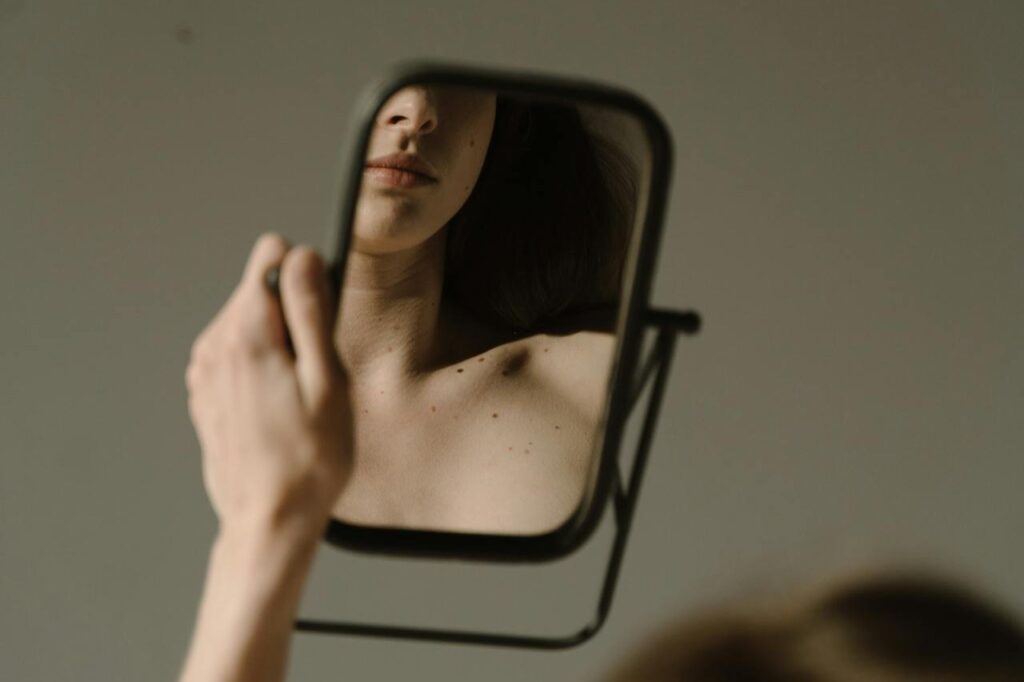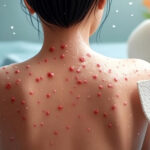Chest acne affects millions of people worldwide, yet it remains one of the most overlooked forms of body acne. Unlike facial breakouts that get immediate attention, chest acne often hides beneath clothing, leading many to suffer in silence. If you’re dealing with persistent bumps, blackheads, or painful cysts on your chest, you’re not alone—and more importantly, effective treatment options are available.
This comprehensive guide will walk you through everything you need to know about treating chest acne, from understanding its root causes to implementing proven treatment strategies that deliver real results.
Understanding Chest Acne: Types and Causes
What Is Chest Acne?
Chest acne develops when hair follicles and pores on your chest become clogged with dead skin cells, excess oil (sebum), and bacteria. The chest area is particularly susceptible to acne because it contains numerous sebaceous glands and is often covered by clothing that can trap sweat and bacteria.
Types of Chest Acne
Understanding the type of acne you’re dealing with is crucial for selecting the right treatment approach:
- Blackheads (Open Comedones): Small, dark spots caused by clogged pores exposed to air
- Whiteheads (Closed Comedones): Small, flesh-colored bumps with pores completely blocked
- Papules: Small, red, inflamed bumps without visible pus
- Pustules: Red bumps with white or yellow pus-filled centers
- Nodules: Large, painful lumps deep beneath the skin surface
- Cysts: Deep, pus-filled lesions that can cause scarring
Root Causes of Chest Acne
Several factors contribute to chest acne development:
Hormonal Fluctuations: Changes in hormone levels, particularly during puberty, menstruation, pregnancy, or due to hormonal disorders like PCOS, can trigger increased oil production and acne formation.
Genetics: Family history plays a significant role in acne susceptibility. If your parents experienced body acne, you’re more likely to develop it too.
Lifestyle Factors: Poor hygiene, excessive sweating without proper cleansing, and wearing tight, non-breathable clothing can exacerbate chest acne.
Environmental Triggers: Hot, humid climates, certain medications (like corticosteroids or lithium), and exposure to comedogenic skincare products can worsen breakouts.
Dietary Influences: While research is ongoing, some studies suggest that high-glycemic foods and dairy products may contribute to acne in certain individuals.
Essential Daily Skincare Routine for Chest Acne
Morning Routine
Step 1: Gentle Cleansing
Start your day with a lukewarm shower using a gentle, non-comedogenic body wash. Look for products containing salicylic acid (0.5-2%) or benzoyl peroxide (2.5-5%) as active ingredients. These help unclog pores and reduce acne-causing bacteria.
Step 2: Pat Dry and Moisturize
Gently pat your chest area dry with a clean towel—avoid rubbing, which can irritate inflamed skin. Apply a lightweight, non-comedogenic moisturizer to prevent excessive dryness that can trigger more oil production.
Step 3: Sun Protection
If your chest will be exposed to sunlight, apply a broad-spectrum, non-comedogenic sunscreen with at least SPF 30. Sun exposure can worsen acne and lead to post-inflammatory hyperpigmentation.
Evening Routine
Step 1: Post-Workout Cleansing
If you’ve exercised during the day, shower immediately afterward to remove sweat and bacteria. Use the same acne-fighting body wash from your morning routine.
Step 2: Targeted Treatment
Apply spot treatments containing benzoyl peroxide or salicylic acid to active breakouts. For sensitive skin, start with lower concentrations and gradually increase as tolerated.
Step 3: Weekly Exfoliation
Once or twice weekly, use a gentle exfoliating scrub or chemical exfoliant containing alpha-hydroxy acids (AHAs) or beta-hydroxy acids (BHAs) to remove dead skin cells and prevent clogged pores.
Proven Treatment Options
Over-the-Counter Solutions
Salicylic Acid Products
Salicylic acid is a beta-hydroxy acid that penetrates deep into pores, dissolving oil and dead skin cells. It’s particularly effective for blackheads and whiteheads. Look for body washes, lotions, or spot treatments containing 0.5-2% salicylic acid.
Benzoyl Peroxide Treatments
This powerful antibacterial agent kills acne-causing bacteria and helps prevent new breakouts. Start with 2.5% concentration to minimize irritation, and gradually increase to 5-10% if needed. Always use sunscreen when using benzoyl peroxide, as it can increase sun sensitivity.
Retinoid Alternatives
Over-the-counter retinol products can help accelerate cell turnover and prevent clogged pores. However, they may cause initial irritation, so introduce them gradually into your routine.
Natural and Home Remedies
Tea Tree Oil
This natural antibacterial agent can be effective for mild chest acne. Dilute tea tree oil (5-10% concentration) with a carrier oil before applying to avoid irritation.
Honey and Cinnamon Masks
Raw honey has antimicrobial properties, while cinnamon can help reduce inflammation. Mix equal parts honey and cinnamon powder, apply to affected areas for 10-15 minutes, then rinse with warm water.
Clay Masks
Bentonite or kaolin clay masks can help absorb excess oil and unclog pores. Use once or twice weekly, leaving the mask on for 10-15 minutes before rinsing.
Professional Treatment Options
Prescription Topical Medications
- Topical Retinoids: Tretinoin, adapalene, and tazarotene are more potent than over-the-counter options
- Topical Antibiotics: Clindamycin or erythromycin can reduce bacterial growth
- Combination Therapies: Products combining retinoids with antibiotics or benzoyl peroxide
Oral Medications
- Antibiotics: Doxycycline, minocycline, or tetracycline for inflammatory acne
- Hormonal Treatments: Birth control pills or spironolactone for hormone-related acne
- Isotretinoin (Accutane): Reserved for severe, treatment-resistant cases
In-Office Procedures
- Chemical Peels: Professional-strength acids to accelerate skin renewal
- Acne Surgery: Extraction of stubborn comedones and cysts
- Light Therapy: Blue light or photodynamic therapy to target acne bacteria
- HydraFacial: Deep cleansing and exfoliation treatment
Lifestyle Modifications for Long-Term Success
Clothing and Fabric Choices
Choose Breathable Materials
Opt for loose-fitting, breathable fabrics like cotton that allow air circulation and wick moisture away from skin. Avoid synthetic materials that trap heat and sweat.
Wash Workout Clothes Regularly
Change out of sweaty clothes immediately after exercise, and wash workout gear after each use with fragrance-free, hypoallergenic detergent.
Dietary Considerations
Reduce High-Glycemic Foods
Consider limiting foods with high glycemic indexes, such as white bread, sugary snacks, and processed foods, which may contribute to acne in some individuals.
Stay Hydrated
Drink at least 8 glasses of water daily to help flush toxins from your system and maintain healthy skin hydration.
Consider Dairy Reduction
Some people find that reducing dairy consumption helps improve their acne. Try eliminating dairy for 4-6 weeks to see if you notice improvements.
Stress Management
Chronic stress can worsen acne by increasing hormone production and inflammation. Incorporate stress-reduction techniques such as:
- Regular exercise (followed by immediate showering)
- Meditation or mindfulness practices
- Adequate sleep (7-9 hours nightly)
- Relaxation techniques like deep breathing or yoga
When to See a Dermatologist
While many cases of chest acne respond well to over-the-counter treatments and lifestyle modifications, certain situations warrant professional medical attention:
- Persistent Acne: If your chest acne doesn’t improve after 10-12 weeks of consistent treatment
- Severe Symptoms: Deep, painful cysts or nodules that may lead to scarring
- Emotional Impact: When acne significantly affects your self-esteem or quality of life
- Signs of Infection: Increased redness, warmth, or pus that suggests bacterial infection
- Hormonal Concerns: Irregular periods, excessive hair growth, or other signs of hormonal imbalance
A dermatologist can provide personalized treatment plans, prescribe stronger medications, and perform professional procedures to achieve clearer skin faster.
Treatment Timeline and Expectations
Understanding realistic timelines helps maintain motivation during treatment:
Weeks 1-2: Initial adjustment period; some treatments may cause temporary irritation or purging
Weeks 4-6: Early improvements in skin texture and reduction in new breakouts
Weeks 8-12: Significant improvement in existing acne and overall skin appearance
3-6 Months: Optimal results with consistent treatment and lifestyle modifications
Remember that consistency is key—stick with your chosen treatment regimen for at least 10-12 weeks before making major changes.
Preventing Chest Acne Recurrence
Once you’ve achieved clearer skin, maintaining results requires ongoing commitment:
- Continue using acne-fighting products 2-3 times weekly for maintenance
- Maintain good hygiene practices, especially after sweating
- Choose non-comedogenic skincare and cosmetic products
- Monitor your skin for early signs of new breakouts
- Address hormonal imbalances with appropriate medical care
- Manage stress levels through healthy lifestyle practices
Frequently Asked Questions
Q: Can chest acne cause permanent scarring?
A: Yes, particularly deep cysts and nodules can cause permanent scarring if left untreated or if you pick at them. Early treatment and avoiding manipulation of lesions helps prevent scarring.
Q: Is chest acne contagious?
A: No, chest acne is not contagious. It’s caused by internal factors like hormones, genetics, and clogged pores, not by bacteria that can be transmitted between people.
Q: How long does it take to see results from treatment?
A: Most people begin seeing improvements within 4-6 weeks of consistent treatment, with optimal results typically achieved after 3-4 months of regular use.
Q: Can I use facial acne products on my chest?
A: Yes, many facial acne products can be used on the chest. However, body skin is typically less sensitive than facial skin, so you may be able to tolerate stronger concentrations of active ingredients.
Q: Does chest acne get worse before it gets better?
A: Some treatments, particularly retinoids and chemical exfoliants, may cause an initial “purging” period where acne temporarily worsens before improving. This typically lasts 2-4 weeks.
Take Action for Clearer Skin Today
Chest acne doesn’t have to be a permanent struggle. With the right combination of proper skincare, lifestyle modifications, and professional treatment when needed, you can achieve the clear, healthy chest skin you deserve.
Start by implementing a consistent daily skincare routine using proven acne-fighting ingredients like salicylic acid or benzoyl peroxide. Make simple lifestyle changes such as wearing breathable clothing and showering immediately after sweating. Most importantly, be patient and consistent with your chosen treatment approach.
If over-the-counter options aren’t providing the results you need after 10-12 weeks, don’t hesitate to consult with a dermatologist. Professional treatment can accelerate your progress and prevent potential scarring from severe acne.
Remember, clear skin is achievable—it just takes the right approach, consistency, and sometimes professional guidance to get there. Your journey to confident, acne-free skin starts with taking that first step today.



